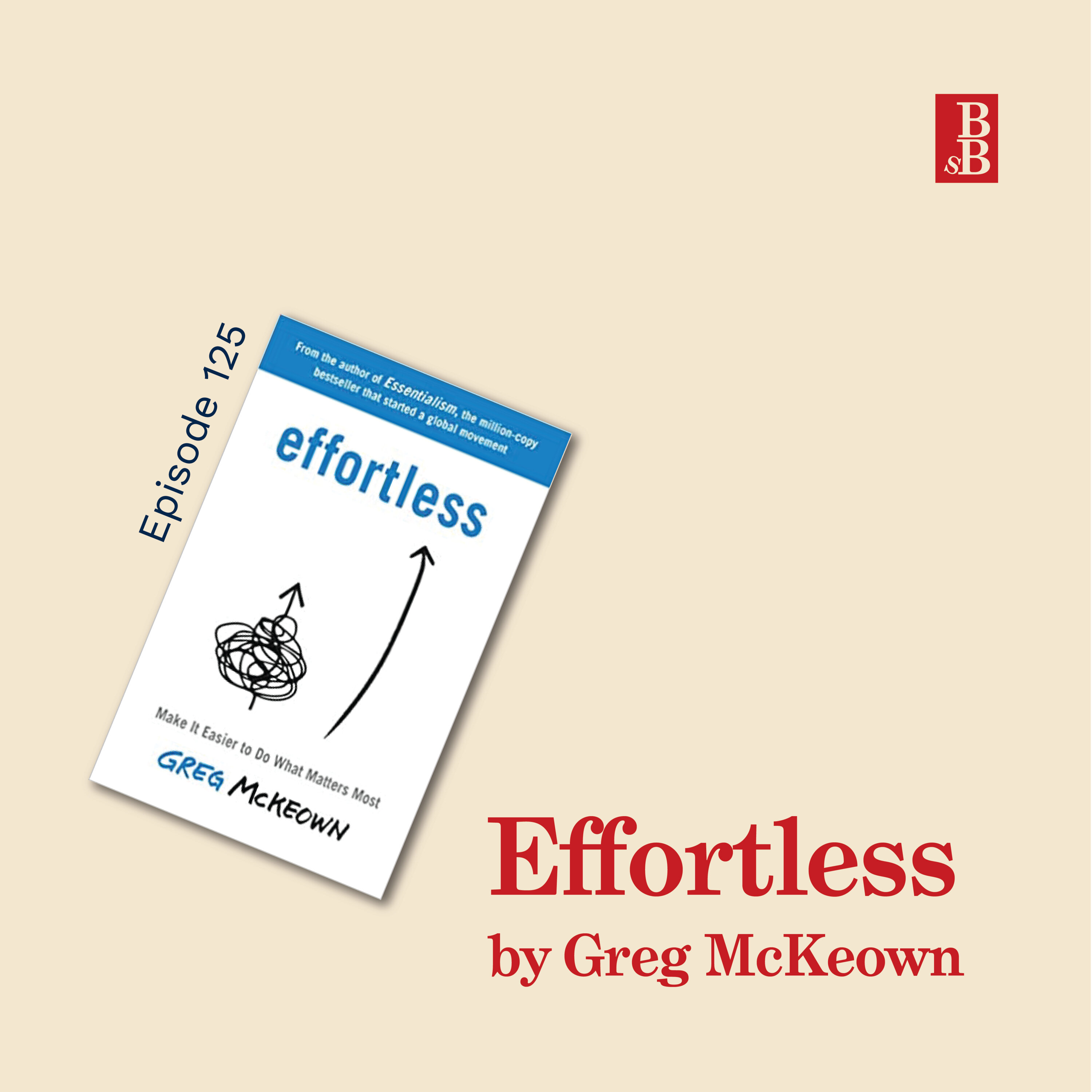Effortless by Greg McKeown - why life doesnt' need to be so hard

\xa0
\nABOUT THE BOOK
\nAs high-achievers, we\u2019ve been conditioned to believe that the path to success is paved with relentless work. That if we want to overachieve, we have to overexert, overthink, and overdo. That if we aren\u2019t perpetually exhausted, we\u2019re not doing enough.
\xa0Getting ahead doesn\u2019t have to be as hard as we make it. No matter what challenges or obstacles we face, there is a better way: instead of pushing ourselves harder, we can find an easier path. Effortless offers actionable advice for making the most essential activities the easiest ones, so you can achieve the results you want, without burning out.\xa0
ABOUT THE\xa0AUTHOR
\nGreg McKeown has dedicated his career to discovering why some people and teams break through to the next level\u200a\u2014\u200aand others don\u2019t.
\nThe definitive treatment of this issue is addressed in McKeown\u2019s New York Times and Wall Street Journal bestseller, Essentialism: The Disciplined Pursuit of Less. As well as frequently being the #1 Time Management book on Amazon, this book challenges core assumptions about achievement to get to the essence of what really drives success.
\nHis writing has appeared or been covered by The New York Times, Fast Company, Fortune, HuffPost, Politico, and Inc. Magazine.\xa0
\nOriginally from London, England, McKeown now lives in Calabasas, California with his wife, Anna, and their four children. He did his graduate work at Stanford University.
\nSource: https://gregmckeown.com/
\nBig idea #1 \u2014 Effortless State
\nThis is essentially the mindset of effortlessness. And the being of effortlessness; always asking the question, \u2018how could this be easy\u2019? Or even taking it further, as Greg does in chapter two, with the question of \u2018how could this be fun?\u2019.
\nIt\u2019s averting the hurried and distracted and everything-worth-doing-must-be-hard approach to life that we get trapped in. And instead being rested, at peace and focused.
\nThe book has a whole section on rest and recovery. And the rule of rest is to never do more than you can recover from in that day or that week. So you should never do more in a day than you can recover from in a day, and never do more in a week that you, then you can recover from that week.
\nThis way you achieve sustained effort and consistency, which can be maintained, rather than big sprints, followed by burn out; running hard and then collapsing in a heap, running really hard again and collapsing in another heap. (Admit it, you\u2019ve done it too).
\nThis approach might mean stopping while you\u2019ve still got gas in the tank, rather than going to failure every single time. So you\u2019ll need to stop pulling all nighters and instead, stop work at a sensible time each day, which means you can do good work again the next day, and the next day, rather than needing several days to recover.
\nBig idea #2 \u2014 Effortless action
\nEffortless action is accomplishing more by trying less.
\nIt\u2019s taking those first steps towards whatever it is you\u2019re trying to do, reducing inevitable procrastination and overthinking. The elements of effortless action are defining what needs to happen, and what tiny step needs to happen next. Because we can\u2019t eat the proverbial elephant all at once, we need to take a first little bite.
\nWe can then simplify, and think about what could you not do. The simplest steps, or the easiest steps, are the ones you don\u2019t need to take. So start from zero; how could we take out as many steps as possible from this process? There\u2019s some good UX and UI examples of this idea in the book.
\nNext we need to think about how to keep moving and make progress. In the book is the concept of the \u2018zero draft\u2019. It\u2019s not even a first draft, it\u2019s a zero draft, it doesn\u2019t count, it is a messy, terrible, rubbish dump of ideas that you write down. It doesn\u2019t even have to be coherent. But by doing this you\u2019ve starting some progress, which in turn helps you to move forward.
\nBig idea #3 \u2014 Effortless results
\nThis is the ability to achieve and replicate effortless results again and again, through some kind of consistent and maintainable systems.
\nThe elements of effortless results include learning; with real focus on learning principles or mindsets and mental models that allow you to make easy decisions over and over again, without having to over analyze everything every single time.
\nThe next element is lift, using leverage such as teaching to accelerate your own learning, but also spread knowledge so others can help you achieve the results, or help them achieve their results.
\nThe next element is automation, freeing up your brain space and time by using the tools available such as automated transfers to savings accounts, food preparation or delivery, or even your toilet paper subscriptions. Something that you just don\u2019t want (or need) to think about doing every time it needs doing.
\nNext is trust, which Greg talks about as the \u2018oil for frictionless relationships\u2019. And then finally in effortless results is prevention. Investing time, maybe some money, up front to avoid something happening later. Especially if that could happen over and over again.
\n\xa0
\n\xa0
\nConsider supporting the podcast with your next book purchase. Save the Steph\u2019s Business Bookshelf affiliate stores for Book Depository (Global) or Bookshop.org (US) in your browser.
Support my book habit: https://www.buymeacoffee.com/stephsbookshelf
See omnystudio.com/listener for privacy information.